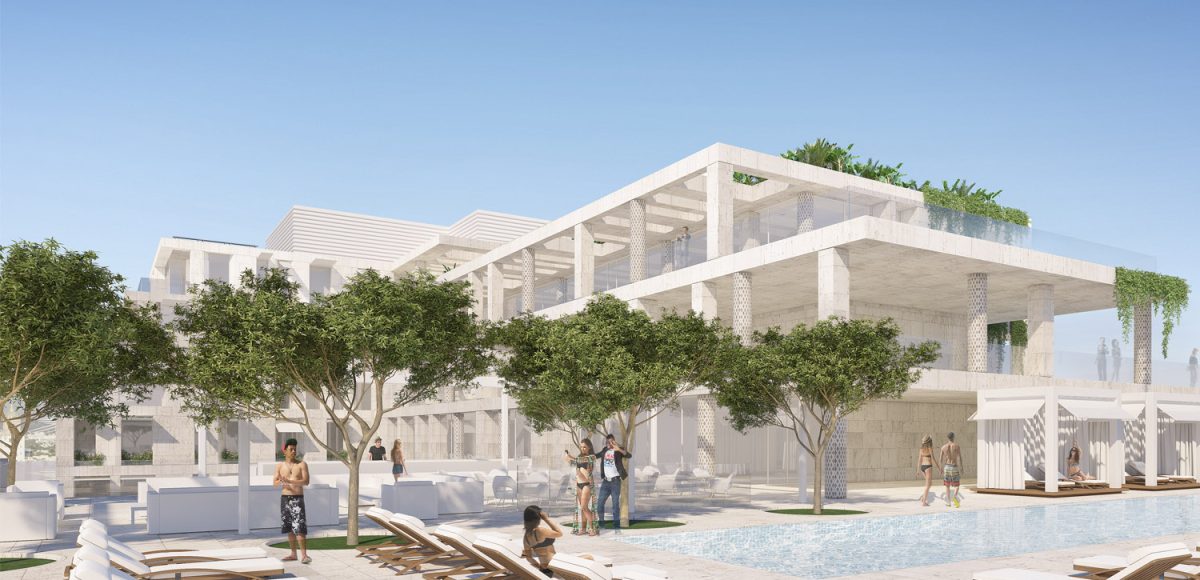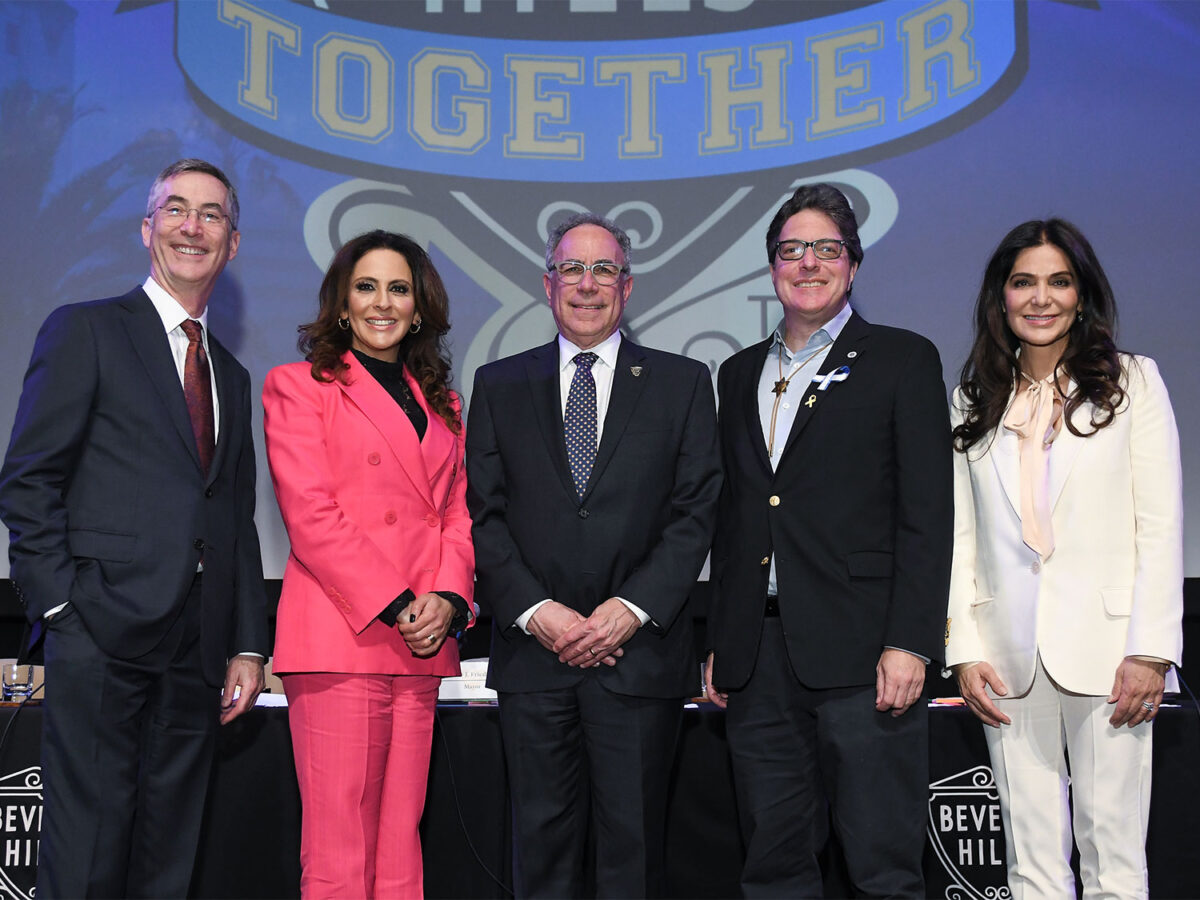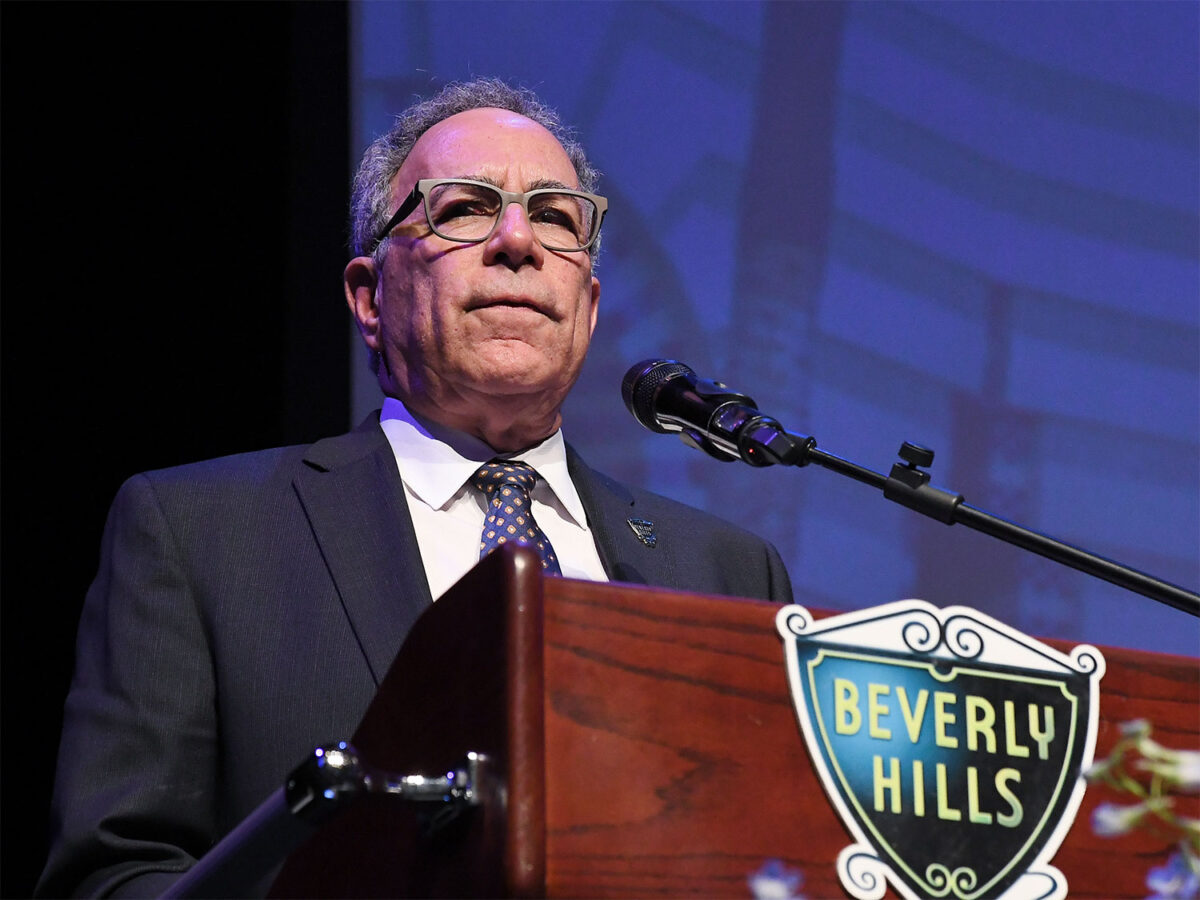The Beverly Hills City Council voted 4-1 at its Sept. 20 regular meeting to conditionally approve the Cheval Blanc Beverly Hills hotel project. Councilmember John Mirisch cast the dissenting vote.
The Council must revisit the project at an Oct. 11 meeting at which they will review a “draft Development Agreement” that is being hashed out by LVMH Moët Hennessy Louis Vuitton (LVMH), Mayor Lili Bosse, and Councilmember Lester Friedman. According to a presentation from the city’s Planning Department, the development agreement will include an economic analysis and fiscal impact report.
“This doesn’t work without a development agreement that recognizes the city’s contribution to this,” said Vice Mayor Julian Gold at the meeting.
Against Mirisch’s objection, Gold successfully pushed to have the Council vote on approving the project at the meeting. Gold couched the development agreement as a condition that would “tie a bow” around the distinctive project. “It makes our next step a little easier,” Gold said.
At the five-hour meeting that wrapped up just before midnight, Bosse praised the architecturally unique, ultra-luxury hotel on the 400 block of North Rodeo Drive. She called the project “visionary,” a peek into the future, and “everything I believe our community is about.”
The mayor also complimented LVMH for working with both the city’s Planning Commission and Planning Department. Bosse repeatedly noted it was “interesting” that after some initial project concerns – mostly around alley, sidewalk and road congestion – there was just one member of the public voicing his objection at the meeting, a representative of Unite Here Local 11.
LVMH gave “one of the best presentations I’ve ever seen,” Bosse said.
LVMH made modifications following multiple city meetings, including widening the pedestrian walkway in front of the building, ensuring nearby public alleyway use, and committing to build an environmentally sustainable hotel that could achieve LEED gold certification.
Planning officials expressed confidence the changes will minimize any harmful traffic impacts. For example, Masa Alkire, principal planner for the city, stated that revisions will reduce traffic emanating from the building by 60% on South Santa Monica Boulevard compared to the original plan.
Reflecting on the project a day after the meeting, Bosse told the Beverly Hills Courier that the Cheval Blanc hotel could have a historic and far-reaching impact.
“I felt we were creating the next 100 years and the future, and it took all of us to create that,” Bosse said. “For me, it was a monumental and exciting moment.”
First proposed over two years ago, the project designed by architect Peter Marino features 109 rooms, a ground floor restaurant open to the public, a second-floor restaurant only available to hotel guests, and a third-floor private club.
The project sprawls over almost 1.3 acres and features a design of varying building heights, with the highest point sloping to 115 feet. A subterranean garage plans to provide 139 parking spaces.
LVMH has argued to city residents and officials that the hotel plus restaurant, fitness center and private club stands at the pinnacle of modern luxury and will serve as a new hub for Rodeo Drive.
Anish Melwani, Chairman and CEO of LVMH North America, called the development, “A new, modern anchor for Rodeo Drive,” at the Council meeting.
The executive noted that the luxury hotel would follow a similar hotel that opened a year ago in Paris by LVMH.
Wearing shiny, black leather, Peter Marino himself also addressed Council members. The New York-based architect stated that he began his involvement with the city, “by dating a beautiful woman from Beverly Hills and marrying her. She went to Westlake in 1983, and I lived here for several years.”
Marino added that he has already designed six different boutiques presently along Rodeo Drive.
“I’ve got a lot of my life invested here,” he said.
As for the project, Marino mentioned the aesthetic and practical chances he was taking, including having each of the building’s 162 windows be of a different size.
Marino also carried into Council chambers a square block of a French limestone, Luget. The building will be made out of Luget, which, Marino said, “ages beautifully.”
“I’m very fond of it, as was Louis the 11th, the 14th and the 15th,” Marino said of the stone.
The architect also discussed publicly visible art that would occupy the building lobby, including a Sol LeWitt mural.
“Even if you can’t afford a room, you can enjoy all the artwork,” Marino said.
During multiple, lengthy public comment periods, residents expressed their enthusiastic support for LVMH and Marino’s vision.
“Our organization is very excited for this project,” testified Julie Wagner, CEO of Beverly Hills’ Conference and Visitors Bureau. “It will cement our place as a global leader in luxury hospitality.”
Another proponent was Joseph Fuchs, organizer at United Brotherhood of Carpenters and Joiners of America. Led by Matt Construction, a Los Angeles-based general contractor, project construction is expected to last up to 38 months and include as many as 500 construction jobs.
“We urge you to support the Cheval Blanc project to create good-paying jobs for residents of Beverly Hills and Los Angeles,” Fuchs said.
The lone public dissenter was from Unite Here Local 11, whose members include Southern California hotel workers. The union’s stated objection was not that Cheval Blanc was going to have a non-union hotel workforce. The developer declined to say whether it anticipated unionized staff. Rather, it was that the hotel would indirectly add to the region’s affordable housing crisis, and put Beverly Hills behind in its state requirements for affordable housing.
Putting housing into the North Rodeo Drive commercial area would be inconsistent with the city’s overall planning, argued Ryan Gohlich, the city’s Director of Community Development. Gohlich noted that in 2021 the city had expanded the amount of land zoned for housing, but North Rodeo Drive was not included in that.
Mirisch expressed skepticism about putting affordable housing on Rodeo Drive, which he called the “most expensive land in Southern California.”
But the council member said that he would like to see a development agreement include a provision for affordable housing elsewhere in Beverly Hills, which could perhaps house the Cheval Blanc’s prospective construction or hotel workers.
In explaining his dissent, Mirisch said the height was inconsistent with the rest of Rodeo Drive. He also called for additional conditions on the hotel, such as LVMH potentially supplying some of its company-owned art for an art museum, or the hotel holding civic events.







